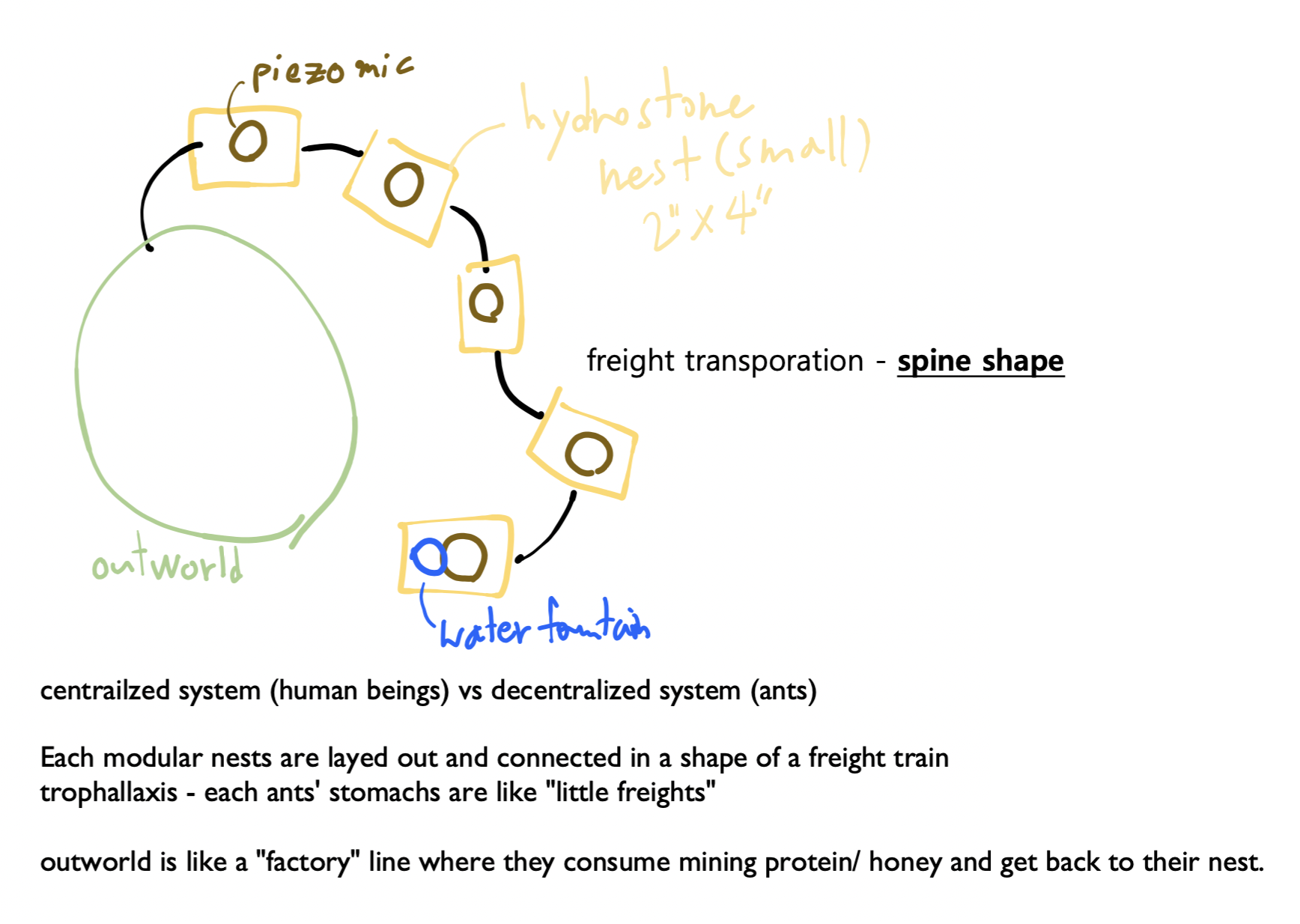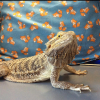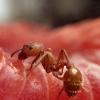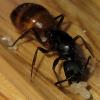Hi Everybody! ![]()
I am a sound designer and artist preparing for another interactive audio installation featuring ants.
I am writing for grant/event applications for exhibition opportunities, and I am kinda stuck, so I need your help!
To briefly introduce my work,
Here is my previous version: https://www.instagra.../p/CdOkbdhPj2V/
How it works:
Anthesizer is a combination of the words Ant + Synthesizer. It is a tool to sonify an ant colony in real time, and look into our society in the reflection of theirs. This real-time sonification process starts with the piezo mics that are built inside of each chamber of the custom-made ant nest. Signals picked up by each mic go through amplifier circuits and fed into a real-time sound synthesis software, MaxMSP. There are tons of variations I can make depending on how I design the nest, and the sound synthesis algorithms.
My question:
[1] The main theme of current project is "Logistics": How they deliver and distribute foods and nutrients.
Here is a crude sketch/notes of how I might lay out the nests and outworld..
I think there should be something more, and I feel like something is missing. Plus, it might be boring to just have the nests with piezo mics laid out like that and do sound synthesis based off of it. That's kinda similar to previous version.
If you have any thoughts, ideas, suggestions, critiques, any opinions about it, feel free to put it on the comment. It really helps.
[2] When I google "ant logistics", I could see a lot of academic papers and articles deals with "Ant Colony Optimization" and "Swarm Intelligence" which are basically focused on an algorithm that finds the shortest route in a shorter period of time. I don't know if I can apply those concepts on my piece anyhow.
[3] I have P. rugosus (50+W), and C. fragilis (100+W) colonies right now.
I am thinking of using fragilis this time, but if you have any other species that would fit perfect for this theme, let me know.
I am also thinking of purchasing a large colony if I could get a grant from school.
Thank you for reading.



















